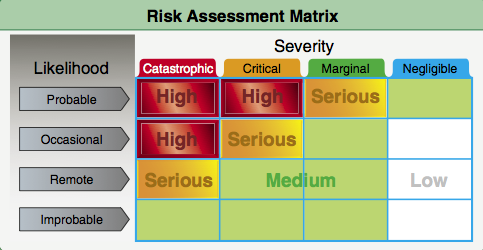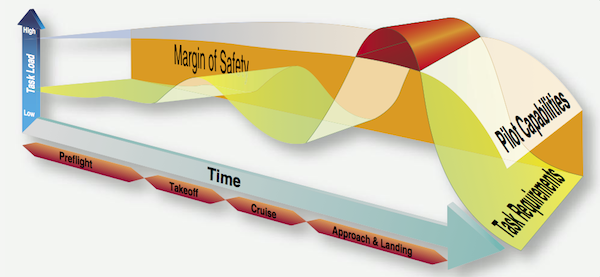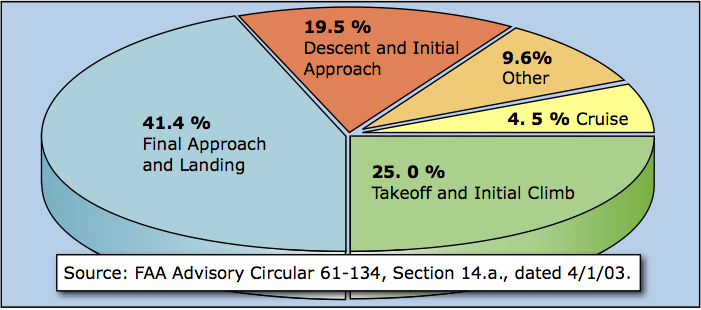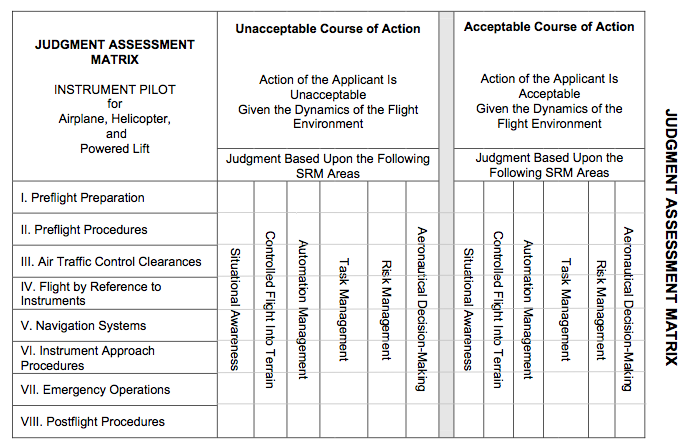Single-Pilot Resource Management
Single-pilot IFR is widely-regarded as the most difficult, busiest time you'll spend in a cockpit. The accident statistics also bear this out in loss of control and controlled flight into terrain (CFIT) accidents in IMC.
From the Instrument PTS: Single-Pilot Resource Management (SRM) is defined as the art and science of managing all the resources (both on-board the aircraft and from outside sources) available to a single-pilot to ensure that the successful outcome of the flight is never in doubt.
SRM available resources include both internal and external resources. Internal resources includes pilot skill, ingenuity, knowledge, equipment and systems understanding and experience, and passengers. External resources include include dispatchers, weather briefers, maintenance personnel, and air traffic controllers.
You will be expected to:
- Prioritize tasks in such a way to minimize distractions
- Complete all tasks in a timely manner without causing a distraction
- Execute all checklists in a manner that does not increase workload at critical times
- Explain the concept of situational awareness
- Explain dangers associated with fixation on particular problem or aspect of the flight
- State current situation at any time during the flight (weather, terrain, traffic, ATC, fuel, aircraft, etc)
- Use navigation displays, traffic, terrain, weather, and other features of the aircraft
- Utilize an installed FMS or autopilot
5P Model
- Plan (Mission)
- Plane
- Pilot
- Passengers
- Programming
Aeronautical Decision Making (ADM)
Defined as the "systematic approach to the mental process used by aircraft pilots to consistently determine the best course of aaction in response to a given set of circumstances." There are several models developed to aid pilots in this process:
3P Model
- P - Perceive the problem
- P - Process the problem and solution
- P - Perform the solution
DECIDE Model
- D - Detect that a chance has occurred
- E - Estimate the need to counter or react to the change
- C - Choose a desirable outcome
- I - Identify actions needed to reach desired outcome
- D - Do it!
- E - Evaluate the results of the action taken
Hazardous Attitudes
There are also five hazardous attitudes that diminish our ability to make good decisions. They are presented here along with their antidotes:
- Anti-authority - "Don't tell me [what to do]." - "The rules are in place for a reason."
- Impulsivity - "Do it quickly." - "Not so fast, think first."
- Invulnerability - "It won't happen to me." - "It could happen to me."
- Macho - "I can do it." - "Taking chances is foolish."
- Resignation - "What's the use?" - "I am not helpless, I can make a difference."
Risk Management
Risk is defined as the probability and possible severity of accident or loss from exposure to various hazards, including injury to people and loss of resources. Risk management is the logical process of weighing the potential costs of risks against the possible benfits of allowing those risks to stand uncontrolled.
Four Fundamental Risk Factors
- Pilot (this is listed first for a reason)
- Airplane
- Environment
- External Pressures
Risk Management Process
- Identify the Hazard
- Assess the Risk
- Analyze Risk Control Measures
- Make Control Decisions
- Implement Risk Controls
- Supervise and Review

Risk Mitigation
There are at least two mental checklists a pilot can utilize to mitigate risk.
I'M SAFE
- I - Illness
- M - Medication
- S - Stress
- A - Alcohol
- F - Fatigue
- E - Eating / Emotion
PAVE
- P - Pilot
- A - Aircraft
- V - EnVironment
- E - External
Task Management
Task management (TM) is the process by which pilots manage the many, concurrent tasks that must be performed to safely and efficiently fly a modern aircraft. You will be expected to appropriately prioritize tasks, complete tsks in a timely manner, and execute all checklists and procedures. TM entails the following:
- Initiation of new tasks
- Monitoring of ongoing tasks
- Prioritization of tasks based on importance, status, and urgency
- Interruption and subsequent resumption of lower priority tasks
- Termination of tasks that are complete or no longer relevant

Situational Awareness
Situational awareness is the accurate perception and understanding of all the factors and conditions within the four fundamental risk elements that affect safety before, during, and after the flight. More succinctly, is the the pilot's mental picture of everything happening around him/her during any portion of a flight.
Distractions, fatigue, stress, or overload detract from a pilot's situational awareness. Probably the single biggest risk factor in situational awareness is complacency.
Controlled Flight Into Terrain
Controlled flight into terrain (CFIT) is a type of accident generally resulting from lack of visibility or cloud clearance, and a failure to comply with instrument procedures which ensure obstruction and terrain clearance. According to the FAA, CFIT accidents account for 17% of all general aviation fatalities. The pilot will be expected to:
- Accurately assess the risks associated with terrain and obstacles
- Use current charts and procedures
- Use and explain a terrain awareness system (TAWS) if available
- Plan departures and arrivals to avoid terrain and obstacles
- Alter flight as necessary to avoid terrain
- Plan any course diversion to ensure proper terrain/obstruction clearance
- Explain and understand aircraft performance limits associated with CFIT accidents
CFIT Accident Breakdown:

Six basic causes of CFIT accidents:
- Loss of Situational Awareness
- Cockpit Distractions
- Complacency
- Lack of Technical or Operational Experience
- Lack of Adequate Preparation
- Confusion
Automation Management
Automation management is the demonstrated ability to control and navigate an aircraft by means of the automated systems installed in the aircraft. Most importantly, knowing when to use it.
Common Mistakes
- Failure to detect an abnormality
- Failure to decide on a proper course of action
- Failure to implement decisions in a timely manner
- Failure to utilitize all aircraft and human resources at the student's disposal
ACS Test Standards
You will be evaluated by the examiner based on the following matrix:
